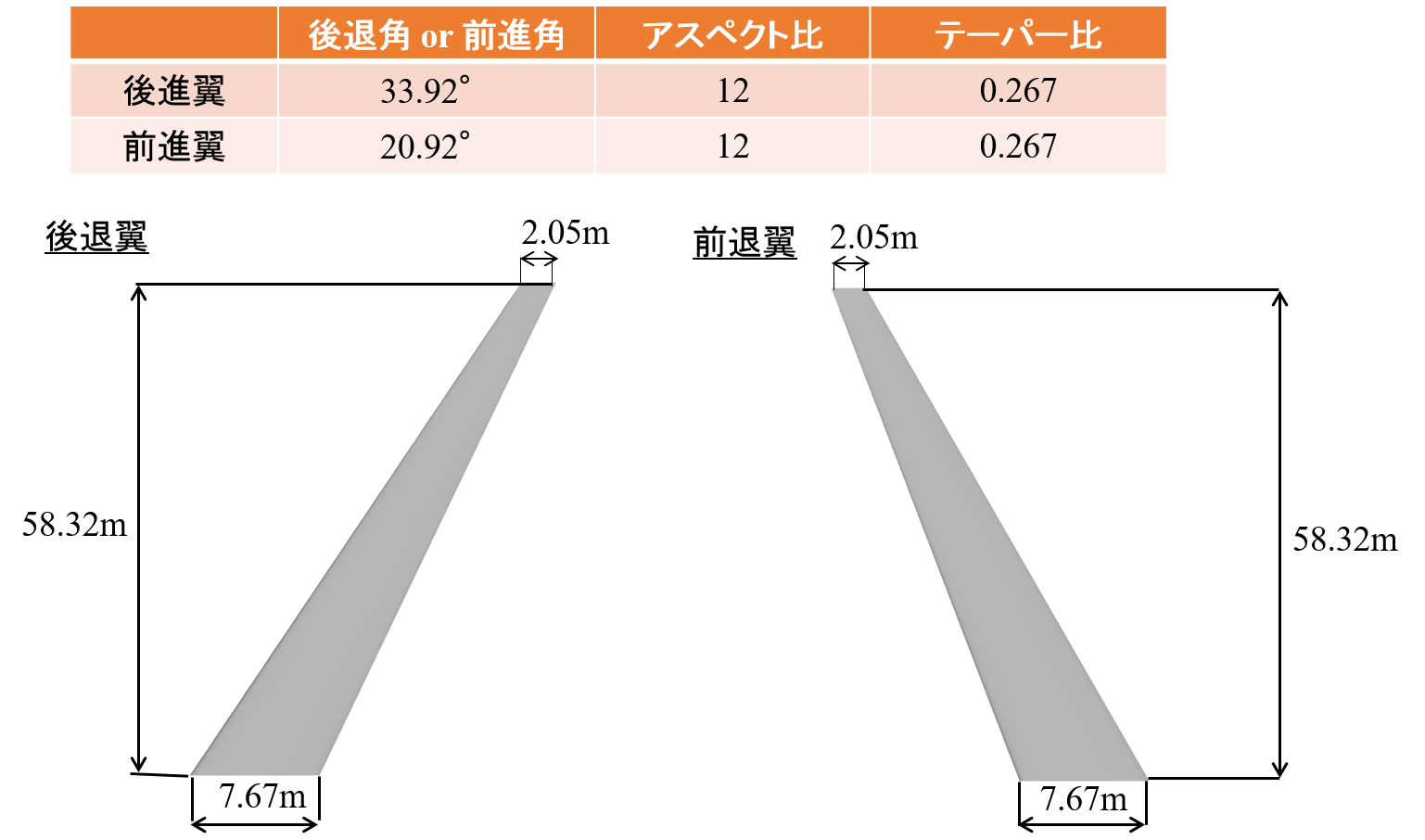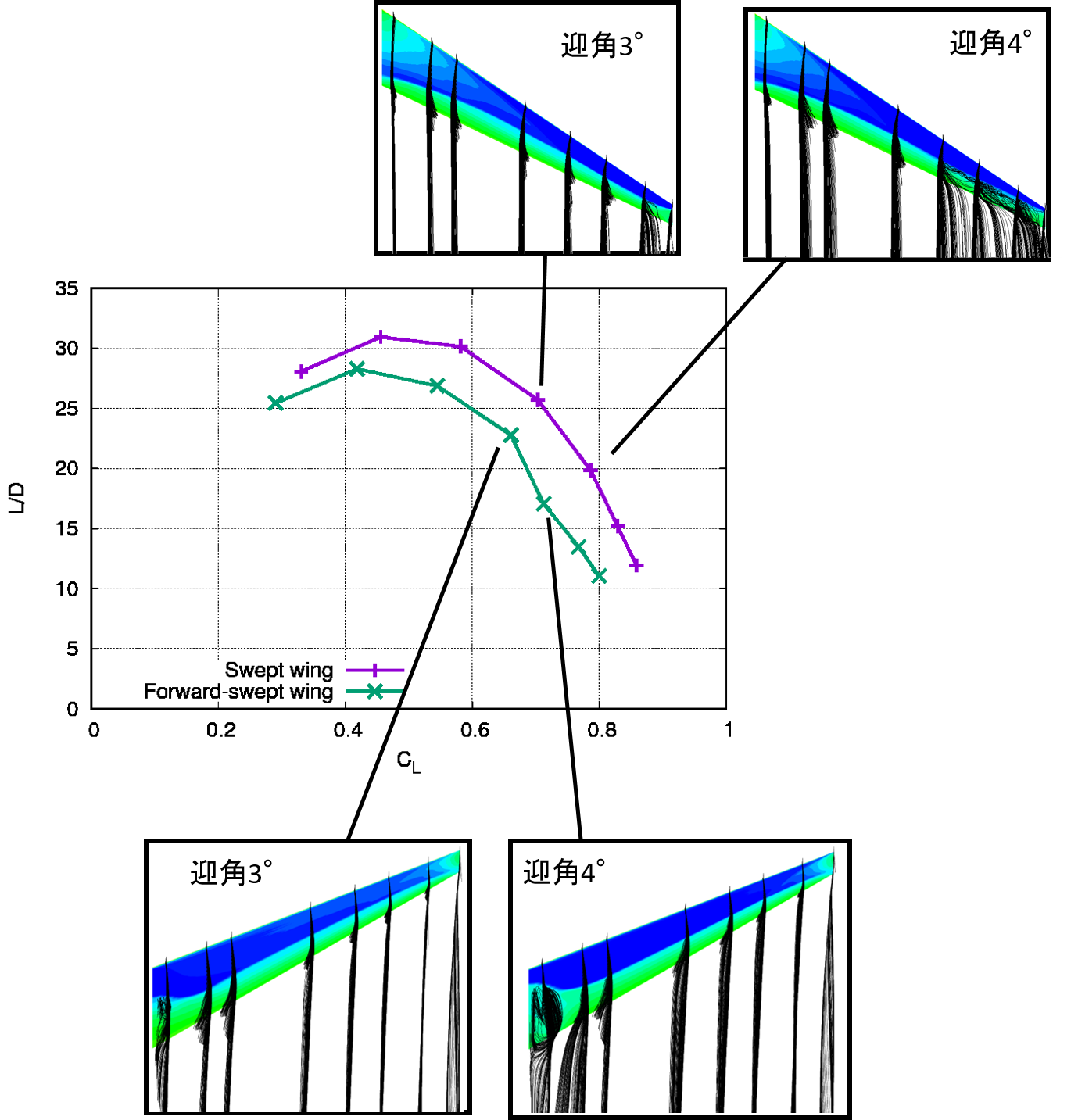Collarboration work on reseach and development for ecowing technology (future aircraft design)
JAXA Supercomputer System Annual Report April 2018-March 2019
Report Number: R18EA0622
Subject Category: Aeronautical Technology
- Responsible Representative: Yoshikazu Makino, Unit Head, Aeronautical Technology Directorate, Aviation Systems Research Unit
- Contact Information: morizawa@mech.tottori-u.ac.jp(morizawa@mech.tottori-u.ac.jp)
- Members: Seiichiro Morizawa, Keisuke Tokura
Abstract
For the future aircraft design, the aerodynamic characteristics of swept-back and swept-forward wings are compared using CFD. Through the parametric study of the planforms, the influences of the design parameters on the aerodynamic characteristics and flow fields are clarified.
Reference URL
N/A
Reasons for using JSS2
In order to conduct the parametric study of three-dimensional shapes with CFD, huge computational costs are required. It is impossible to make such computations with the workstation at our laboratory. That is the reason we have used JSS2.
Achievements of the Year
A parametric study of the planforms of tapered swept-forward and swept-back wings has been conducted, and comparisons of the aerodynamic characteristics have been made. Figure 1 shows that the best swept-forward wing has the same aspect ratio and taper ratio as the best swept-back wing. As seen in Fig. 2, on the whole, the latter is superior in the lift-to-drag ratio to the former. Furthermore, the lift-to-drag ratio of the swept-forward wing decreases rapidly around the lift coefficient of 0.7, or the AoA of 4 degrees. This seems to be caused by flow separation near the root of the swept-forward wing.
Publications
N/A
Usage of JSS2
Computational Information
- Process Parallelization Methods: N/A
- Thread Parallelization Methods: Automatic Parallelization
- Number of Processes: 1
- Elapsed Time per Case: 11 Hour(s)
Resources Used
Fraction of Usage in Total Resources*1(%): 0.32
Details
Please refer to System Configuration of JSS2 for the system configuration and major specifications of JSS2.
| System Name | Amount of Core Time(core x hours) | Fraction of Usage*2(%) |
|---|---|---|
| SORA-MA | 2,863,496.20 | 0.35 |
| SORA-PP | 0.00 | 0.00 |
| SORA-LM | 0.00 | 0.00 |
| SORA-TPP | 0.00 | 0.00 |
| File System Name | Storage Assigned(GiB) | Fraction of Usage*2(%) |
|---|---|---|
| /home | 662.27 | 0.69 |
| /data | 13,563.37 | 0.24 |
| /ltmp | 2,712.67 | 0.23 |
| Archiver Name | Storage Used(TiB) | Fraction of Usage*2(%) |
|---|---|---|
| J-SPACE | 0.00 | 0.00 |
*1: Fraction of Usage in Total Resources: Weighted average of three resource types (Computing, File System, and Archiver).
*2: Fraction of Usage:Percentage of usage relative to each resource used in one year.
JAXA Supercomputer System Annual Report April 2018-March 2019




